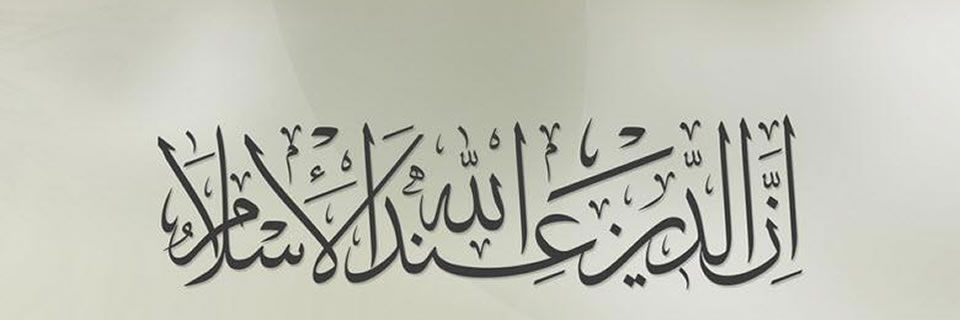History (713)
After Hazrat Abu Salamah (radhiyallahu ‘anhu) and his family performed hijrah, Hazrat Aamir bin Rabee’ah (radhiyallahu ‘anhu) migrated with his wife, Hazrat Laylah bint Khaythamah (radhiyallahu ‘anha). Thereafter, Hazrat Abu Ahmed bin Jahsh (radhiyallahu ‘anhu) and his brother, Hazrat Abdullah bin Jahsh (radhiyallahu ‘anhu), together with both their families, set out for Madinah Munawwarah after locking their homes in Makkah Mukarramah.
The Hijrah of Hazrat Abu Salamah (radhiyallahu ‘ahu) and His Family
Written by user2The first Sahaabi who prepared for the hijrah to Madinah Munawwarah was Hazrat Abu Salamah (radhiyallahu ‘anhu). He had made preparations to leave with his wife and child. However, at the time when he fastened the saddle onto the camel, mounted his wife and child on the camel, and he was about to depart, then the people heard about his migration.
The wife of Hazrat Abu Salamah (radhiyallahu ‘anhu) was Hazrat Ummu Salamah (radhiyallahu ‘anha) (who after the demise of her husband, was honoured by Allah Ta‘ala to come into the nikaah of Hazrat Rasulullah (sallallahu ‘alaihi wasallam), thus becoming one of the Ummahaat-ul-Mu’mineen). As soon as her family heard that he was departing with her, they rushed up to him and said, “You can do whatever you want with your life, but you are not at liberty to take our daughter away.” Saying this, they grasped her hand and pulled her away.
Just as the inception of prophethood commenced with Rasulullah (sallallahu ‘alaihi wasallam) being shown pious and true dreams, similarly the inception of the hijrah (migration) commenced with pious and true dreams.
At the beginning, Rasulullah (sallallahu ‘alaihi wasallam) was shown the place of his migration in dreams, but was not told the name of the place. Rasulullah (sallallahu ‘alaihi wasallam) was merely shown that the place of his migration was a place with abundant date palms. It is for this reason that Rasulullah (sallallahu ‘alaihi wasallam) had thought that the place of his hijrah will perhaps be Yamaamah or Hajar.
While Rasulullah (sallallahu ‘alaihi wasallam) was still reflecting over this, Allah Ta‘ala revealed wahi specifying Madinah Munawwarah as the chosen place of migration. Hence, on the command of Allah Ta‘ala, Rasulullah (sallallahu ‘alaihi wasallam) instructed his Sahaabah (radhiyallahu ‘anhum) to perform hijrah to Madinah Munawwarah.
After pledging allegiance at the blessed hand of Rasulullah (sallallahu ‘alaihi wasallam), the caravan of the Ansaar departed from Makkah Mukarramah. On arriving in Madinah Munawwarah, they openly proclaimed their conversion to Islam.
At that time, most of the tribes of Madinah Munawwarah had already embraced Islam, although there were still a few elderly people who were obstinately clinging onto their ancient ways of idolatry with strong determination. Among them was Amr bin Jamooh, the leader of the Banu Salimah tribe. His son, Hazrat Mu’aaz bin Amr bin Jamooh (radhiyallahu ‘anhu), had just returned from Makkah Mukarramah after pledging his allegiance at the blessed hand of Rasulullah (sallallahu ‘alaihi wasallam).
Bay’at is an Arabic word derived from “bay’a” which means “to sell”. In the terminology of the Shari’ah, bay’at refers to happily and enthusiastically selling one’s life and wealth in the hand of Allah Ta‘ala in exchange of Jannah.
When the Ansaar began to take the pledge (bay’at) at the hands of Rasulullah (sallallahu ‘alaihi wasallam), then Hazrat Abdullah bin Rawaahah (radhiyallahu ‘anhu) enquired, “O Rasul of Allah (sallallahu ‘alaihi wasallam)! You may stipulate in this pledge any condition that you want us to agree to (and you are at liberty to take whatever assurances you want from us), but tell me, what will we attain in exchange of this pledge that we give you?” Rasulullah (sallallahu ‘alaihi wasallam) replied, “You will attain Jannah.”
Imaam Maalik (rahimahullah) mentions, “An elderly man from the Ansaar informed me that at the time when Rasulullah (sallallahu ‘alaihi wasallam) was selecting the Nuqabaa (leaders), Hazrat Jibreel (‘alaihis salaam) showed him each person who was to be selected by indicating towards him.”
Imaam Zuhri (rahimahullah) says that Rasulullah (sallallahu ‘alaihi wasallam) addressed the Ansaar saying, “I am going to appoint twelve leaders from among you. None of you should feel offended if he is not chosen as a Naqeeb, because I am obliged to do as I am instructed.” Hazrat Jibreel (‘alaihis salaam), who was seated next to Rasulullah (sallallahu ‘alaihi wasallam), would gesture towards the proposed Naqeeb, and Rasulullah (sallallahu ‘alaihi wasallam) would accordingly appoint him.
After the group of the Ansaar had pledged allegiance at the blessed hand of Rasulullah (sallallahu ‘alaihi wasallam), Rasulullah (sallallahu ‘alaihi wasallam) said to them, “Nabi Musa (‘alaihis salaam) had selected twelve Nuqabaa (leaders) from the Bani Israa’eel. In the same way, as per the counsel of Hazrat Jibreel (‘alaihis salaam), I am also going to select twelve leaders from among you.”
Before taking the pledge at the blessed hand of Rasulullah (sallallahu ‘alaihi wasallam), Hazrat Abul Haytham bin Tayhaan (radhiyallahu ‘anhu) anxiously asked, “O Prophet of Allah! There is something that I wish to ask. We have some ties with the Jews. After we establish our relationship with you, our ties with the Jews will be severed. Let it not be such that when Allah Ta‘ala makes you victorious and grants you assistance, then you will return to Makkah leaving us (floundering) here in Madinah Munawwarah.”
Hearing this, Rasulullah (sallallahu ‘alaihi wasallam) smiled and said, “Never! Your life is my life! You are mine and I am yours! Your enemies are my enemies and your allies are my allies.” Upon this, they all enthusiastically and joyfully extended their hands to pledge allegiance.
When the caravan of the Ansaar reached Makkah Mukarramah, they secretly sent a message to Rasulullah (sallallahu ‘alaihi wasallam) informing him that they wished to meet him. Rasulullah (sallallahu ‘alaihi wasallam) promised to meet them during the days of Tashreeq (Haj) in the same valley in Mina where the other fortunate pilgrims of Madinah Munawwarah had pledged their allegiance to him the previous year.
At the appointed hour, in the company of his uncle, Hazrat Abbaas (radhiyallahu ‘anhu), Rasulullah (sallallahu ‘alaihi wasallam) met them in the valley of Mina. Although Hazrat Abbaas (radhiyallahu ‘anhu) had not yet embraced Islam at this time, he was nonetheless a devoted supporter of Rasulullah (sallallahu ‘alaihi wasallam).
Hazrat Jaabir (radhiyallahu ‘anhu) narrates:
For ten long years, Rasulullah (sallallahu ‘alaihi wasallam) would go to meet the people in their homes, in the market places and in their social functions. He would invite them towards Islam and say to them:
من يؤويني ومن ينصرني حتى أبلغ رسالة ربي وله الجنة
“Who will support me and who will assist me in conveying the message of my Rabb? For him (the one who assists me), I guarantee Jannah.
More...
The Second Pledge of the Ansaar – 13th Year of Prophethood
Written by user2The following year, which was the 13th year of prophethood, Hazrat Mus’ab bin Umair (radhiyallahu ‘anhu), set out for Makkah Mukarramah with a group of Muslims in order to perform Haj.
Accompanying these Muslim pilgrims were a number of disbelievers from the Aws and Khazraj tribes who had not as yet embraced Islam. Most of the group, which numbered more than four hundred, comprised of these people.
In the same year (the 12th year of nubuwwah), Hazrat As’ad bin Zuraarah (radhiyallahu ‘anhu) established Jumu’ah in Madinah Munawwarah.
When Hazrat As’ad (radhiyallahu ‘anhu) observed that the Jews and Christians have a special day of the week in which they congregate; the Jews on Saturday and the Christians on Sunday, then he reflected that the Muslims should also stipulate a day of the week to congregate, remember Allah Ta‘ala, express their shukr (appreciation) before Him, perform salaah and worship Him.
Hazrat Rifaa’ah bin Raafi’ Zuraqi (radhiyallahu ‘anhu) reports:
Even before the six Sahaabah of the Ansaar came to Makkah Mukarramah, my cousin (my mother’s sister’s son), Mu’aaz bin ‘Afraa, and I came to Makkah and met with Rasulullah (sallallahu ‘alaihi wasallam).
The Islam of Hazrat Usaid bin Hudhair and Hazrat Sa’d bin Mu’aaz (radhiyallahu ‘anhuma)
Written by user2After coming to Madinah Munawwarah, Hazrat Mus’ab bin Umair (radhiyallahu ‘anhu) would invite the people towards Islam and lead them in Salaah as he was their imaam.
One day, Hazrat Mus’ab (radhiyallahu ‘anhu) was delivering a sermon and inviting towards Islam in front of a large crowd of people. On hearing of this, Usaid bin Hudhair immediately picked up his sword, came to him and said, “What have you come here for? Why are you misleading our women and children? It would be better if you left this place!”






